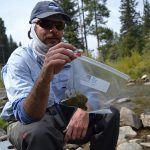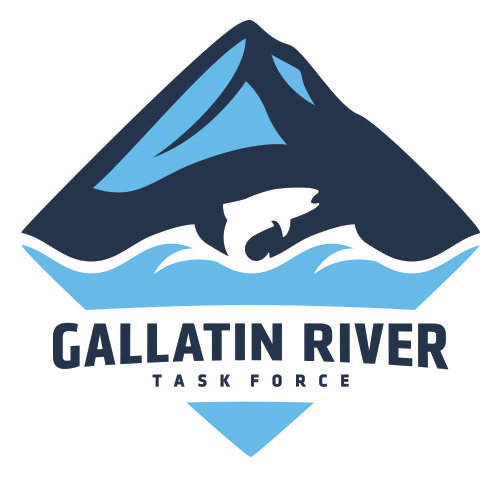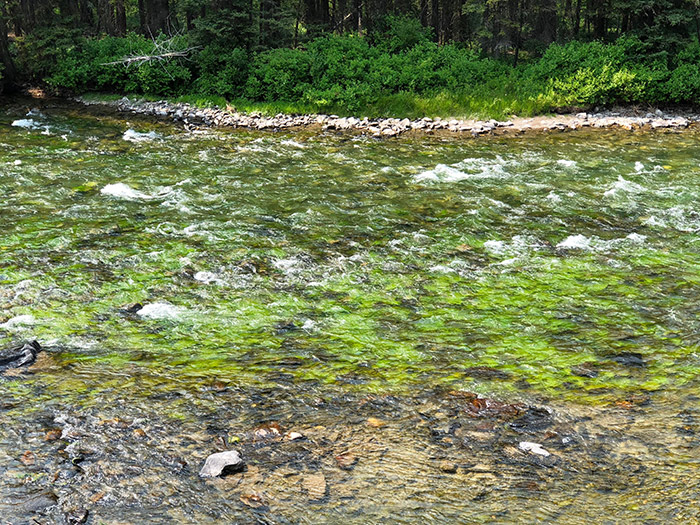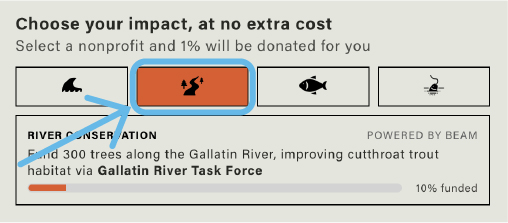Vibrant green algae covered the bottom of the Gallatin River below the West Fork confluence to about Moose Creek, as well as the Taylor Fork below Wapiti Creek.
According to longtime locals, algae in the Gallatin was “the worst it’s ever been”. And the Task Force wants to understand why.

Big Sky Watershed Corps member, Jack Murray, handles a bag full of filamentous algae at the West Fork monitoring site. This sample, along with 21 others, was sent to a lab where they analyze the amount of chlorophyll-a and weight of the sample.
We collected water quality and algae biomass data from 21 sites this summer. If all goes well, we will have results from Energy Laboratories in November. Then, we’ll work with the Montana Department of Environmental Quality to understand what our data tells us about river health.
A variety of conditions exacerbate algae growth, both natural and human-induced. Understanding how these factors work together to cause algae blooms is like fitting together the pieces of a jigsaw puzzle.
Although we have yet to identify the cause of the 2018 algae bloom, we do know a lot about algae and the causes of excess growth in our watershed in the past.
While we wait for our results and analysis, we wanted to answer some of the questions that we’ve heard around town.
We developed a webpage with answers to 21 common questions about algae and water quality, which we will update as we learn more.
If you have further questions, email stephanie@gallatinrivertaskforce.org.




